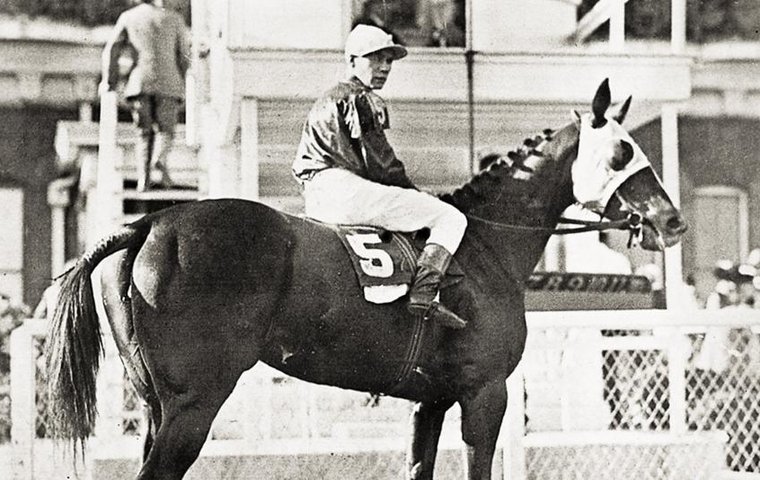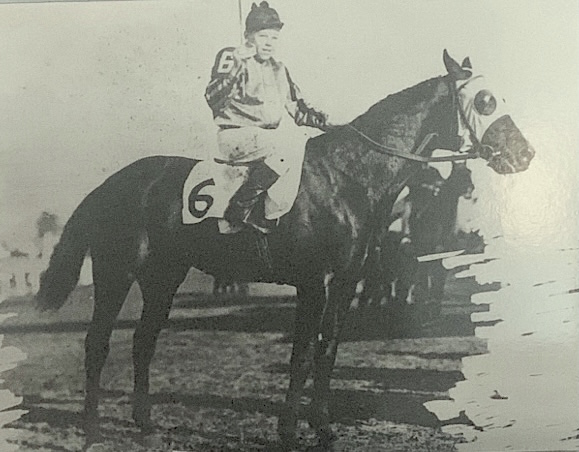
Although largely forgotten today, in the first half of the 20th century the names Tippity Witchet and Pan Zareta were known throughout North America.
At a time when horseracing was part of the national consciousness, these two plied their trade across the nation and beyond into Mexico and Canada and even Cuba. They ran more races and won more races than could be considered possible now.
Pan Zareta, or ‘Panzy’ as she was affectionately known, was foaled in Texas in 1910. The little chestnut foal was named after Pansy Zareta, the daughter of the Mayor of Juarez, who was a friend of the breeder, James F Newman.
Pan Zareta’s sire, Abe Frank, means little now, and her dam, Caddie Griffith, may not stand close scrutiny either, but together they produced a filly who became known as the queen of the U.S. turf and was to be inducted into not only the Fair Grounds and Texas racing halls of fame, but the national one in Saratoga too.
World record time
Panzy became famous across the North American continent. People traveled miles to see her race. She wasn’t famous because of the top races she competed in, though, because she didn’t compete in the top races. In fact, many of her wins came in minor contests. She just became famous and loved for her toughness and ability to win.
She won the Señorita Stakes, the Rio Grande stakes, the Chihuahua Stakes. She won some handicaps, and she set a world record time for five furlongs at Juarez racetrack - 57.2 seconds (hopefully cheered on by Pansy, her namesake) - that stood for 31 years. She set 11 track records over the course of her career.
What Pan Zareta became most famous for was her incredible career. She ran 151 times and won 76 of them. She finished in the money 128 times in spite of having to carry up to 140lbs at times, always conceding weight to her opponents.
When she set that world record time, she was conceding 10lb to her male runner-up.
Pan Zareta beat Kentucky Derby winners Old Rosebud in one of two encounters she had with him. She raced in three countries, eight U.S. states and 24 racetracks. The traveling alone seems extraordinary, although travel by rail may have been a better experience for horses than any travel choice we can provide for them today.
Pan Zareta earned the Newman family $39,000 over the six years she competed, and in 1918 she was retired to stud. Sadly she was found to be infertile and it was elected to return her to training.
She was at Fair Grounds in New Orleans when she fell ill and developed pneumonia and died in her stall there. She was buried in the infield.
She was later to be joined there by Kentucky Derby winner Black Gold, whose dam, Useeit, she had battled on the track.
The Pan Zareta Stakes is still run each year at Fair Grounds in testament to the one-time queen of the American turf.
The astonishing Tippity Witchet
Tippity Witchet is an even more remarkable story of a hard-working horse. The diminutive runner almost makes Pan Zareta look like a good-for-nothing layabout.
By Travers winner and leading sire Broomstick and out of the St Simon mare Lady Frivoles, little Tippity had claims to greatness, but again his name was not made in the great stakes, although he did compete at the highest levels early in his career.
As a 2-year-old, he won 14 of his 20 starts, winning eight in one 7-week period, including the 1917 Aberdeen Handicap at Havre De Grace and was considered one of the top juveniles in the nation.
His owner sold him for $3,000 at the end of that year, and his second owner auctioned him some races later, receiving $20,000 for the little horse. He changed hands many times and was a loyal friend to all who cared for him.

Tippity Witchet raced from 2 until the age of 14. He won at 27 of the 31 racetracks he competed on. He raced in Mexico in Canada and in Cuba, he won on fast ground and in the mud, he won over six furlongs and he won over a mile and a half, he won multiple stakes and numerous claimers, often changing hands, and he kept racing and he kept winning.
At the age of 12 he won 12 races.
In 1928 the Washington Post wrote, “Perhaps no horse more deserves the title of selling plater king of the American turf than Tippity Witchet.”
The following year he sustained an injury in a race and was retired. He earned his retirement.
Pony-sized Tippity Witchet took part in 266 races in his 12-year career. He was 14 when he ran the last one. He emerged victorious in 78 of those contests, was in the money 172 times and earned over $88,000 for his connections. He spent a large portion of his career competing at Fair Grounds and was inducted into the hall of fame there.
There were calls for this horse, famous across America in his day, to be inducted into the national hall of fame despite his modest status. The king of the selling platers is not inducted yet.
After his retirement in 1929, he remained in active service as a pony at trainer Lionel Bauer’s stable. It was thought being idle would be against Tippity’s nature.
Two remarkable Thoroughbreds, two examples of great service horses have provided to people for millennia. All they have asked for in return is to be cared for and respected.
Here is the kicker though. Tippity Witchet’s race record is scarcely believable to modern eyes, it is hard to imagine any Thoroughbred could ever come close to such a feat, to race so many time and for so long. For one horse to rack up 78 wins is incredible.
However, the splendidly named, small, but giant hearted Tippity Witchet is only the fourth winning-most racehorse to compete in North America - behind three horses from the 1800s - Kingston (by Spendthrift) with 89 wins, Bankrupt (also by Spendthrift) with 86 and Catherina (by Whisker) with 79.


